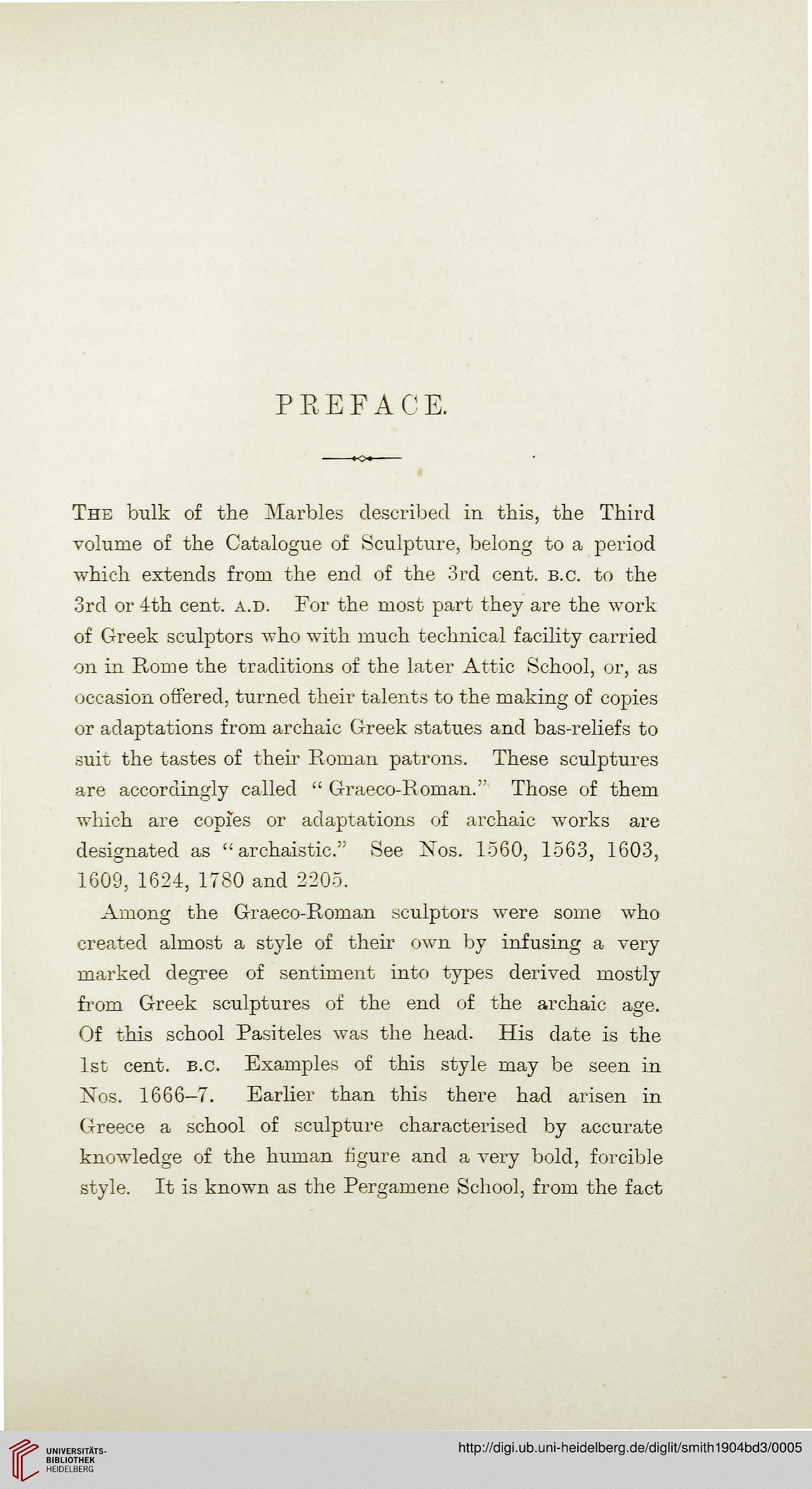PREFACE.
The bulk of the Marbles described in this, the Third
volume of the Catalogue of Sculpture, belong to a period
which extends from the end of the 3rd cent. b.c. to the
3rd or 4th cent. a.d. For the most part they are the work
of Greek sculptors who with much technical facility carried
on in Rome the traditions of the later Attic School, or, as
occasion offered, turned their talents to the making of copies
or adaptations from archaic Greek statues and bas-reliefs to
suit the tastes of their Roman patrons. These sculptures
are accordingly called " Graeco-Roman." Those of them
which are copies or adaptations of archaic works are
designated as " archaistic." See Nos. 1560, 1563, 1603,
1609, 1624, 1780 and 2205.
Among the Graeco-Roman sculptors were some who
created almost a style of their own by infusing a very
marked degree of sentiment into types derived mostly
from Greek sculptures of the end of the archaic age.
Of this school Pasiteles was the head. His date is the
1st cent. b.c. Examples of this style may be seen in
Nos. 1666-7. Earlier than this there had arisen in
Greece a school of sculpture characterised by accurate
knowledge of the human figure and a very bold, forcible
style. It is known as the Pergamene School, from the fact
The bulk of the Marbles described in this, the Third
volume of the Catalogue of Sculpture, belong to a period
which extends from the end of the 3rd cent. b.c. to the
3rd or 4th cent. a.d. For the most part they are the work
of Greek sculptors who with much technical facility carried
on in Rome the traditions of the later Attic School, or, as
occasion offered, turned their talents to the making of copies
or adaptations from archaic Greek statues and bas-reliefs to
suit the tastes of their Roman patrons. These sculptures
are accordingly called " Graeco-Roman." Those of them
which are copies or adaptations of archaic works are
designated as " archaistic." See Nos. 1560, 1563, 1603,
1609, 1624, 1780 and 2205.
Among the Graeco-Roman sculptors were some who
created almost a style of their own by infusing a very
marked degree of sentiment into types derived mostly
from Greek sculptures of the end of the archaic age.
Of this school Pasiteles was the head. His date is the
1st cent. b.c. Examples of this style may be seen in
Nos. 1666-7. Earlier than this there had arisen in
Greece a school of sculpture characterised by accurate
knowledge of the human figure and a very bold, forcible
style. It is known as the Pergamene School, from the fact




